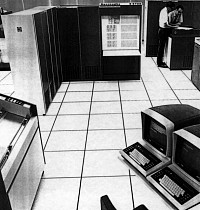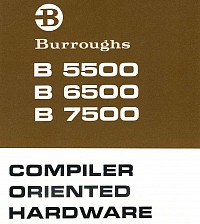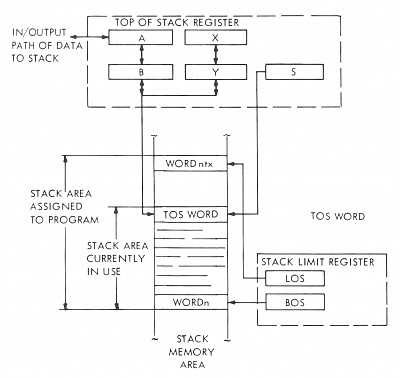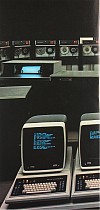Computer Science
Computing History Displays: Fourth Floor
The University of Auckland bought its first computer in 1963, the IBM 1620. This service was later augmented with an IBM1130 (a low-end computer using System/360 technology, designed in France) but it was not until 1971 that the University gained its first computer in the mainframe class, the Burroughs B6700. This was part of a deal brokered by the University Grants Committee where Auckland, Massey, Victoria, Canterbury and Otago all installed the same computer.
The B6700 was very different from other computers of the time in the attention that it gave to software. All programs were to be written in high-level languages and no user at all would be allowed to write programs in machine language. For general program development, and for writing the operating system and compilers, variants of the international language Algol were used - there were also applications languages such as COBOL provided.
The operating system was called the Master Control Program or MCP. Again, uniquely for the time, the MCP was designed to support multiprogramming (multiple programs actively sharing the system) and multiprocessing (more than one processor running programs.) Most work was run in batch mode from cards but it was also possible to edit and initiate programs from remote terminals using the CANDE (command and edit) system.
Top
The instruction set architecture was designed specifically to support the software. To assist compilers, the machine was based around a data stack with instructions operating on, and returning values to, the stack. There were many details specific to using the Algol language. Although compilation was fast, the architecture was not suited to heavy computation but this was partly overcome by use of special streaming modes of operation.
The architecture was designed to support virtualization of memory and multiprocessing. Special 3-bit tags were attached to each word of memory to restrict the ways that memory could be used. Because there was no user access to machine language it was possible to relocate programs and data in real memory without having need for a page-table mapping.
With the B6700 we made our first steps with data communications. A special processor, called the DCP (Data Communications Processor) controlled the interface to telephone lines so that the main processor could operate at the level of complete messages rather than at the bit level. Using CANDE and modems, a few users could deal with the computer remotely. The University of Waikato shared the Auckland B6700 using a remote computer in Hamilton to read cards and print results.
When the time came to replace the B6700 it was thought that the upgrade to the successor Burroughs machine would be too expensive for the kind of work that was done by universities. So the New Zealand universities went their different ways, Auckland choosing Prime computers for their next mainframes. Some other New Zealand B6700 users, particularly ASB, stayed with the Burroughs and successor systems.
The B6700 eventually became the Unisys A-series when Burroughs merged with Univac. Although not directly implemented in hardware, programs using the B6700 architecture can still be run on Unisys computers today. (A hard disk from the Burroughs B6700 is on display on the 5th floor, along with other mementos.)
Top







